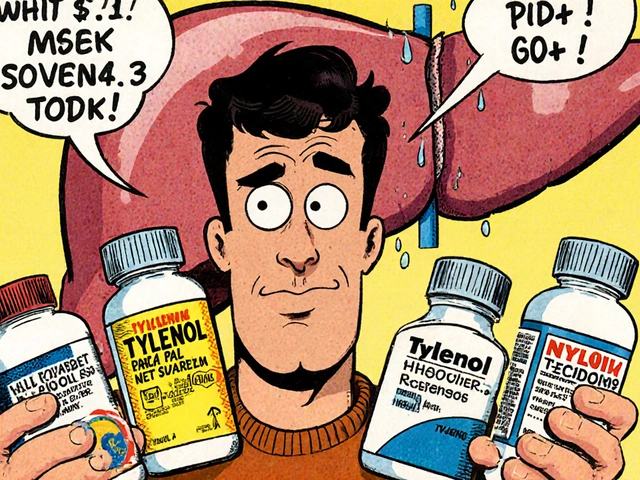Antihistamines: Quick Relief When Allergies Strike
If you’ve ever sneezed nonstop or got itchy eyes out of nowhere, chances are histamine is the culprit. Antihistamines block that pesky chemical and calm your symptoms fast. In this guide we’ll break down how they work, which types suit different needs, and what to watch out for so you can breathe easy.
First‑Gen vs. Second‑Gen: What Sets Them Apart
First‑generation antihistamines like diphenhydramine (Benadryl) hit the brain as well as the nose, which means they’re great for sudden flare‑ups but often make you drowsy. Second‑generation options such as cetirizine (Zyrtec), loratadine (Claritin), and fexofenadine (Allegra) stay out of the central nervous system, so you get relief without feeling knocked out. If you need to stay alert at work or school, reach for a second‑gen pill.
Choosing the Right Antihistamine for You
Start by matching the drug to your symptom pattern. Runny nose and watery eyes? A daily non‑drowsy antihistamine works well. Hives or severe itching? A first‑gen tablet can be taken at night for quick relief. Look at dosage forms too—some come as fast‑acting tablets, others as chewable gummies for kids.
Price matters, but so does quality. Most over‑the‑counter antihistamines are FDA‑approved and cheap enough to keep a bottle on hand year‑round. If you need a prescription strength version, talk to your doctor—sometimes higher doses or combination products help when standard pills fall short.
Watch for drug interactions. Antihistamines can amplify the sedative effect of alcohol, sleep aids, and certain antidepressants. If you’re on other meds, a quick chat with a pharmacist can prevent unwanted side effects.
Side‑effects beyond drowsiness are rare but possible. Some people notice dry mouth, headache, or mild stomach upset. Switching to a different brand often solves the issue without giving up relief.
Storage is simple: keep pills in a cool, dry place away from direct sunlight. A bathroom cabinet works fine as long as it’s not too humid. For kids, lock the medicine away to avoid accidental ingestion.
Finally, remember that antihistamines treat symptoms, not the underlying cause. If you have chronic allergies, consider adding a nasal spray or seeing an allergist for long‑term strategies like immunotherapy.
Bottom line: pick a non‑drowsy second‑gen option for everyday use, stash a first‑gen tablet for night‑time flare‑ups, and always check interactions. With the right antihistamine on hand, you’ll stop letting allergies control your day.

Fexofenadine History: Origins, Development, and Present-Day Uses
This article digs deep into the history of fexofenadine, the popular non-drowsy antihistamine found in Allegra. Discover how it was discovered, why it replaced its predecessor, and how it changed allergy treatments forever. You'll get real facts, practical tips, and the science behind what makes fexofenadine stand out. Read on to learn why this everyday allergy medicine has a pretty fascinating backstory.

Exploring Alternatives to Cetirizine: What Are Your Options?
Discover the best alternatives to Cetirizine for managing allergies. This article covers the various options available, comparing their pros and cons, so you can find what works for you. Assessing both over-the-counter and prescribed solutions, we break down essential information to help navigate your choices. From Diphenhydramine to newer, less sedative options, we delve into the specifics you need to know.





